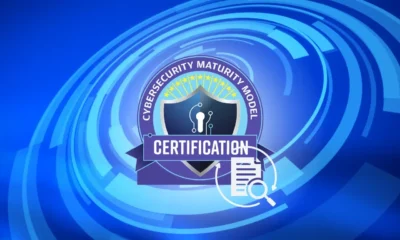Tech
Life360 Not Updating: Troubleshooting Guide
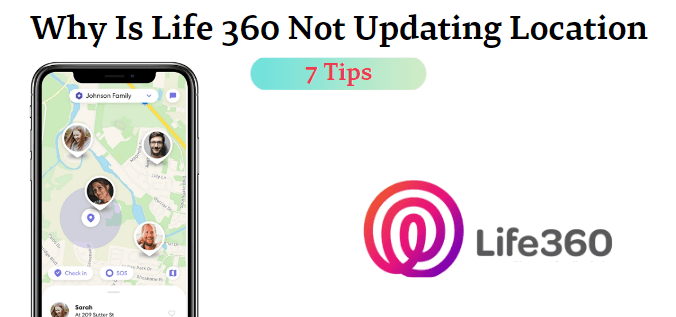
The article “life 360 not updating” Life360 is a popular family locator app that helps users stay connected and informed about the whereabouts of their loved ones. However, encountering issues where the app fails to update location information can be frustrating and concerning. We’ll explore common causes of Life360 not updating and provide troubleshooting steps to resolve the issue.
Understanding the Importance of Location Tracking Apps
Location tracking apps like Life360 offer peace of mind to families by providing real-time location information and safety features. Additionally, they enable users to track the location of family members and receive alerts in case of emergencies, thereby ensuring the well-being of loved ones.
Common Causes of Life360 Not Updating
Device Settings and Permissions
- Incorrect device settings or insufficient permissions granted to the Life360 app may prevent it from updating location information accurately.
Network Connection Issues
- Poor or unstable network connectivity can hinder the transmission of location data between devices and the Life360 servers, resulting in outdated location information.
App Version and Updates
- Using an outdated version of the Life360 app or failing to install available updates may lead to compatibility issues and affect the app’s ability to update location data effectively.
Troubleshooting Steps for Life360 Not Updating
Check Device Settings and Permissions
- Ensure that location services are enabled for the Life360 app and that it has the necessary permissions to access location data on your device.
Ensure Stable Network Connection
- Verify that your device has a stable internet connection, preferably using Wi-Fi or a reliable cellular network, to facilitate the transmission of location updates.
Update Life360 App to the Latest Version
- Visit the app store on your device and check for any available updates for the Life360 app and Install the latest version to benefit from bug fixes and performance improvements.
Restart or Reinstall the Life360 App
- Consider restarting the Life360 app or reinstalling it on your device to troubleshoot any software glitches or issues that may be affecting its functionality.
Additional Tips and Considerations
- Moreover, regularly review and adjust the settings within the Life360 app to ensure optimal performance and accuracy. Additionally, encourage family members to keep their devices charged and powered on to facilitate location updates throughout the day.
Seeking Technical Support for Persistent Issues
If you’ve followed the troubleshooting steps outlined above and continue to experience issues with life 360 not updating. While, it may be necessary to reach out to the app’s technical support team for further assistance. They can provide personalized guidance and help resolve any underlying issues affecting the app’s functionality.
Conclusion
life 360 not updating can be a frustrating issue for users relying on the app for location tracking and family safety. By understanding common causes and implementing troubleshooting steps outlined in this guide, users can effectively address and resolve the issue. Eensuring uninterrupted access to accurate location information.
FAQs
Tech
What Do CMMC Compliance Requirements Really Mean for Small Defense Contractors

For small defense contractors, meeting CMMC compliance requirements isn’t just another government regulation—it’s a necessity for staying in business. The Department of Defense (DoD) expects even the smallest contractors to follow strict cybersecurity measures to protect sensitive data. While compliance can feel overwhelming, understanding what it really means for operations, costs, and security can help businesses stay ahead.
Compliance Costs That Small Defense Contractors Rarely See Coming
The cost of CMMC compliance requirements isn’t just about buying better security tools—it involves ongoing expenses that many small contractors don’t anticipate. Beyond initial assessments and upgrades, businesses must account for long-term costs like continuous monitoring, staff training, and potential third-party audits. These hidden expenses can add up quickly, making it essential for small businesses to plan their budgets carefully.
One major cost driver is the need for documented security policies and technical upgrades to meet CMMC level 2 requirements. Businesses must implement multi-factor authentication, encrypted data storage, and access controls—none of which come cheap. Hiring cybersecurity professionals or working with managed service providers adds another layer of expense, but it’s often unavoidable. Contractors that underestimate these costs may struggle to maintain compliance, putting future contracts at risk.
Security Responsibilities That Go Beyond Just IT Departments
Many defense contractors assume that cybersecurity is solely the responsibility of the IT department, but CMMC requirements impact every employee. Security policies must be followed across all levels of the company, from executives to administrative staff. Human error remains one of the biggest cybersecurity risks, making ongoing training a key requirement under CMMC compliance.
Employees need to recognize threats like phishing scams, unauthorized data access, and improper file sharing. A single mistake—such as sending controlled unclassified information (CUI) over an unprotected email—can lead to compliance failures. To meet CMMC level 1 requirements, businesses must ensure that security practices become part of daily operations, not just a checklist item for IT teams. This cultural shift can take time, but it’s critical for long-term compliance.
Contract Opportunities That Disappear Without Proper Certification
For small defense contractors, failing to meet CMMC compliance requirements means losing out on valuable government contracts. The DoD is making CMMC certification a requirement for all contractors handling sensitive information, and without it, businesses will be ineligible to bid on projects. This shift is forcing many small companies to either adapt quickly or risk losing their competitive edge.
Even contractors that primarily work with larger defense firms must pay attention to compliance. Prime contractors are responsible for ensuring that their subcontractors meet the required security standards. Without CMMC certification, small businesses may find themselves cut out of subcontracting opportunities. Investing in compliance isn’t just about avoiding penalties—it’s about staying in the game.
Cyber Threats That Target Small Businesses Lacking Strong Defenses
Hackers don’t just target large defense contractors—small businesses are often seen as easy entry points into the supply chain. Many cyber criminals focus on smaller firms with weaker security, using them as gateways to steal classified data. CMMC requirements aim to close these gaps by enforcing strict security controls, even at the smallest levels of the defense supply chain.
Ransomware attacks, phishing schemes, and insider threats are all risks that small contractors face daily. Without proper cybersecurity measures, companies can fall victim to attacks that not only compromise data but also lead to non-compliance penalties. Meeting CMMC level 2 requirements ensures that businesses are protecting sensitive information while reducing their chances of becoming an easy target.
Documentation Burdens That Take More Time Than Expected
One of the most underestimated parts of CMMC compliance requirements is the level of documentation required. Small businesses must maintain detailed security policies, incident response plans, and risk assessments to prove compliance. This goes beyond simply having security tools in place—companies must be able to demonstrate their security practices through written records.
Keeping up with documentation can be time-consuming, especially for companies that don’t have dedicated compliance teams. Auditors will expect to see proof that security controls are actively managed and updated. Without thorough documentation, even businesses with strong cybersecurity practices may struggle to pass an assessment. Investing time in proper record-keeping now can prevent costly compliance failures later.
Government Scrutiny That Becomes More Intense with Each Audit
As the DoD tightens enforcement of CMMC compliance, small defense contractors should expect increased scrutiny during audits. Unlike previous cybersecurity requirements that allowed for self-assessments, CMMC compliance requires third-party certification. This means auditors will review policies, security measures, and implementation to ensure full compliance.
Each audit will bring a deeper level of examination, especially for companies handling CUI. Any gaps in security protocols can lead to failed assessments, forcing businesses to make costly corrections before they can regain compliance. Being proactive by staying updated with CMMC level 1 and level 2 requirements can help businesses avoid unexpected setbacks during audits.
Tech
Grandlite E-BUB-F15: Redefining Energy-Efficient Lighting
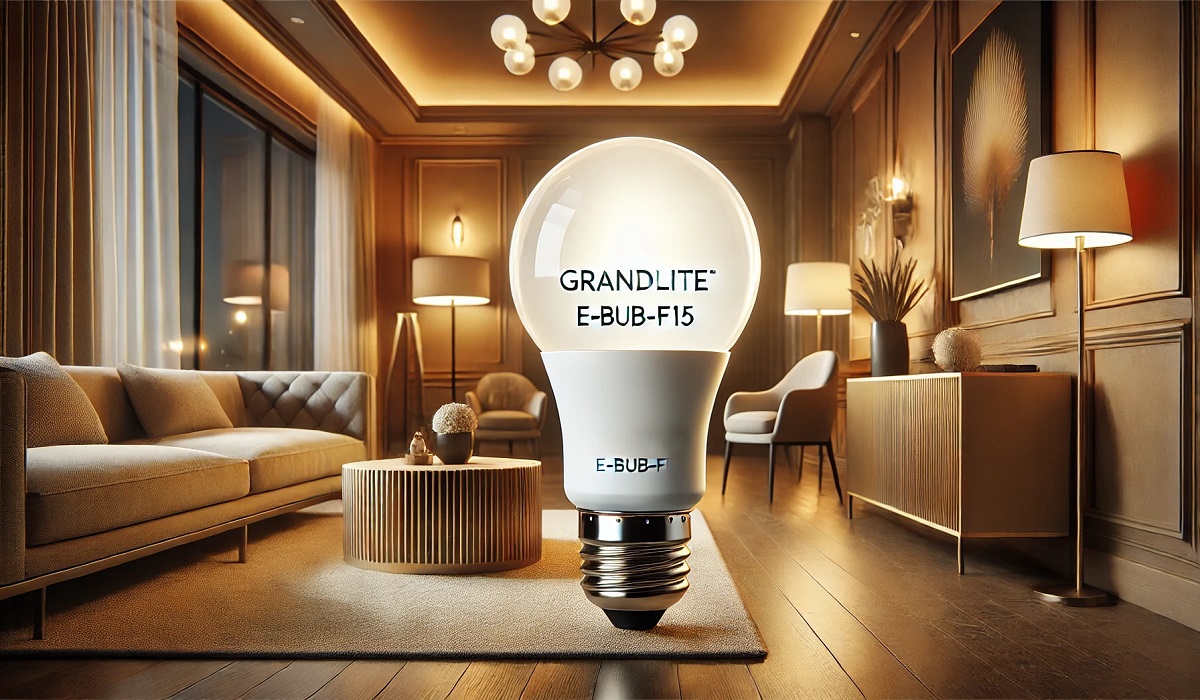
Lighting plays an essential role in enhancing spaces, saving energy, and improving quality of life. The Grandlite E-BUB-F15 stands out as an innovative lighting solution designed for modern households and workplaces. Whether you prioritize energy efficiency, durability, or style, this advanced bulb ticks all the right boxes.
In this article, we’ll explore the features, benefits, and applications of the Grandlite E-BUB-F15, shedding light on why it is becoming a preferred choice for consumers seeking smarter and more sustainable lighting solutions.
What Is the Grandlite E-BUB-F15?
The Grandlite E-BUB-F15 is a state-of-the-art energy-efficient bulb tailored for residential, commercial, and industrial use. Its sleek design, combined with cutting-edge technology, ensures optimal lighting performance while reducing energy consumption.
This bulb is more than just a light source; it’s a combination of innovation and sustainability that promises to transform the way we illuminate spaces.
Key Features of Grandlite E-BUB-F15
1. High Energy Efficiency
Designed with advanced LED technology, the Grandlite E-BUB-F15 consumes significantly less energy compared to traditional bulbs.
2. Long Lifespan
The bulb offers a lifespan of up to 25,000 hours, reducing the frequency of replacements and associated costs.
3. Superior Brightness
With a high-lumen output, the Grandlite E-BUB-F15 ensures consistent and powerful lighting for all environments.
4. Eco-Friendly Design
Manufactured using non-toxic materials, this bulb aligns with global sustainability standards.
5. Versatile Compatibility
Compatible with various fixtures, the Grandlite E-BUB-F15 fits seamlessly into any space, from homes to offices.
Benefits of Choosing Grandlite E-BUB-F15
1. Reduced Energy Costs
By consuming up to 80% less energy than traditional incandescent bulbs, the Grandlite E-BUB-F15 helps significantly lower electricity bills.
2. Enhanced Durability
Its robust design makes it resistant to shocks, vibrations, and voltage fluctuations, ensuring reliability in different conditions.
3. Eye-Friendly Illumination
The bulb emits a soft, flicker-free light that reduces eye strain, making it ideal for workspaces and study areas.
4. Minimal Heat Emission
Unlike traditional bulbs, the Grandlite E-BUB-F15 emits minimal heat, ensuring safety and comfort.
Applications of Grandlite E-BUB-F15
1. Residential Spaces
- Perfect for living rooms, bedrooms, and kitchens.
- Ideal for accent lighting in modern home decor.
2. Offices and Workspaces
- Provides consistent illumination for desks and meeting rooms.
- Reduces glare for comfortable work environments.
3. Commercial Establishments
- Suitable for restaurants, retail stores, and hotels.
- Enhances ambiance while saving energy costs.
4. Industrial Use
- Can be used in factories and warehouses for bright and durable lighting.
How to Install the Grandlite E-BUB-F15
- Turn Off the Power
Ensure the fixture is switched off before installation. - Remove the Old Bulb
Carefully unscrew the existing bulb from the socket. - Insert the Grandlite E-BUB-F15
Align the bulb with the socket and screw it in gently. - Turn On the Power
Switch on the fixture to enjoy the advanced lighting.
Maintenance Tips for Grandlite E-BUB-F15
- Clean Regularly: Dust the bulb using a dry, soft cloth to maintain brightness.
- Avoid Overheating: Use the bulb in well-ventilated fixtures to prevent damage.
- Inspect Fixtures: Ensure sockets and wiring are in good condition.
- Store Properly: Keep spare bulbs in their original packaging to avoid damage.
Why Grandlite E-BUB-F15 Is Better Than Traditional Bulbs
| Feature | Grandlite E-BUB-F15 | Traditional Bulbs |
|---|---|---|
| Energy Efficiency | High | Low |
| Lifespan | 25,000 hours | 1,000–2,000 hours |
| Heat Emission | Minimal | High |
| Brightness | Superior | Moderate |
| Eco-Friendliness | Yes | No |
The Grandlite E-BUB-F15 not only outperforms traditional bulbs but also aligns with modern sustainability goals.
Creative Uses for Grandlite E-BUB-F15
- Mood Lighting
Use dimmable variants for cozy and relaxing atmospheres. - Outdoor Illumination
Perfect for gardens, patios, and balconies due to its weather-resistant features. - Highlighting Art Pieces
Showcase paintings or decor items with their soft yet focused beams. - Emergency Backup Lighting
Keep a few bulbs in your emergency kit for reliable illumination during power outages.
Conclusion
The Grandlite E-BUB-F15 is a game-changer in the lighting industry, offering a perfect balance of efficiency, durability, and style. Its innovative features and eco-friendly design make it a reliable choice for diverse applications, whether in homes, offices, or commercial establishments.
By choosing the Grandlite E-BUB-F15, you’re not only enhancing your spaces but also contributing to a more sustainable future. So, make the switch today and experience lighting that goes beyond expectations.
FAQs
What makes the Grandlite E-BUB-F15 energy-efficient?
Its advanced LED technology consumes significantly less power while providing superior brightness.
Is the Grandlite E-BUB-F15 compatible with dimmer switches?
Yes, certain models of the Grandlite E-BUB-F15 are dimmable, making them suitable for adjustable lighting.
How does the Grandlite E-BUB-F15 contribute to sustainability?
The bulb is made from eco-friendly materials, has a long lifespan, and reduces energy consumption.
Can it be used outdoors?
Yes, the bulb is designed to withstand outdoor conditions when used in compatible fixtures.
What color temperatures are available?
The Grandlite E-BUB-F15 is available in warm white, cool white, and daylight options to suit different preferences.
How long does the Grandlite E-BUB-F15 last?
It has a lifespan of up to 25,000 hours, which is significantly longer than traditional bulbs.
Tech
Sustainable Commercial Roofing: Modern Approaches and Long-Term Benefits
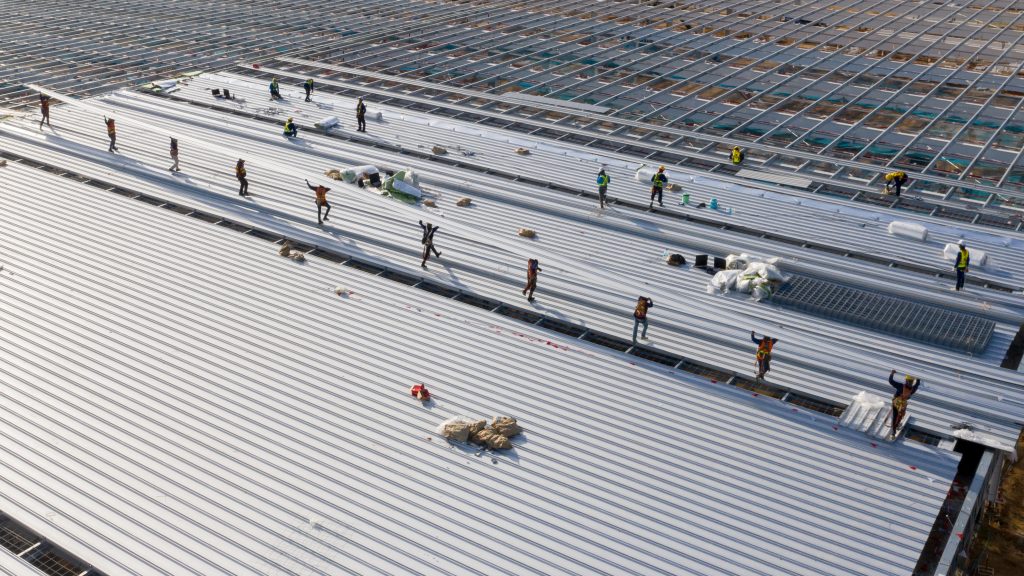
Introduction to Sustainable Commercial Roofing
In recent years, the emphasis on sustainable business practices has gained significant momentum. Businesses are increasingly using sustainable solutions in their infrastructure, particularly in roofing, as they strive to lower their carbon footprint and comply with environmental standards. Commercial roofing plays a crucial role in not only the functionality of a building but also its ecological impact. Implementing sustainable roofs is quickly becoming a strategic choice, offering direct and indirect benefits that resonate with ecological consciousness and business efficiency.
With growing awareness of climate change, companies are looking for ways to minimize their environmental impact when it comes to commercial roofing installation. Sustainable roofing solutions provide a comprehensive approach, combining reduced energy consumption, improved efficiency, and eco-friendly materials. As the backbone of a building’s envelope, roofs significantly influence indoor environments and energy use. Thus, transitioning to sustainable roofing is more than just an eco-friendly gesture; it’s a savvy business move.
Advantages of Sustainable Roofing
One key advantage of sustainable roofing is the potential for substantial energy savings. These systems are designed to enhance temperature regulation, meaning reduced reliance on heating and cooling systems. Over time, this can result in significant cost reductions, which is essential for any firm to be viable. In essence, sustainable roofs contribute to lower operational costs while supporting environmental goals.
Beyond staffing savings, sustainable roofing systems also help lower waste production linked to conventional roofing materials and reduce harmful carbon emissions. Governments frequently offer tax breaks and subsidies to promote environmentally friendly building methods, which makes sustainable roofing even more alluring from a financial standpoint. These systems align with corporate social responsibility objectives and improve public perception and stakeholder engagement by showcasing a commitment to sustainability.
Types of Sustainable Roofing Materials
Sustainable roofing materials encompass a variety of innovative options, each offering unique benefits. Cool roofs, for instance, employ reflective materials to maximize sunlight reflection and minimize heat absorption, thus maintaining cooler building temperatures and enhancing energy efficiency. The U.S. Department of Energy highlights the benefits of cool roofing solutions, emphasizing their role in reducing urban heat islands and improving comfort.
Additionally, solar roofing tiles are becoming increasingly popular for businesses looking to harness renewable energy. By integrating photovoltaic technology into the roof, these tiles allow for on-site energy generation, further reducing reliance on external energy sources and lowering utility bills. Green roofs, on the other hand, consist of a layering of vegetation, which not only improves insulation but also promotes biodiversity and improves air quality.
Implementing Green Roofs in Commercial Spaces
Green roofs offer a multitude of ecological and architectural benefits. They consist of several layers, including waterproofing, insulation, and vegetation, helping to create a self-sustaining ecosystem on top of commercial buildings. These installations not only cut heating and cooling costs but also manage stormwater runoff effectively, lessening the impact of heavy rains and reducing strain on urban drainage systems.
From a business perspective, green roofs improve aesthetic appeal, which can increase property value and make a building more attractive to tenants. They also contribute to urban biodiversity by providing habitats for various species, making them a forward-thinking solution for urban development. Implementing green roofs helps businesses stand out as pioneers of sustainability, enhancing their reputation and engagement with environmentally conscious clients and partners.
Maintenance Tips for Longevity
Maintaining the longevity of sustainable roofing systems can be achieved through regular inspections and upkeep. Routine maintenance ensures that minor issues do not escalate into significant problems requiring costly repairs. Key aspects of maintenance include checking seals, cleaning gutters, and ensuring that any photovoltaic components are debris-free.
It’s crucial to employ methods and materials suited for the specific type of sustainable roofing. For example, green roofs may require regular care of vegetation and soil. By adopting a proactive maintenance approach, businesses can extend the life of their sustainable roofs, maximizing their investment over the years.
Survey of Industry Improvements and Innovations
The roofing sector is witnessing continuous innovation to enhance the performance and feasibility of sustainable solutions. Innovations include advanced materials that offer better durability and efficiency and integrated energy solutions like building-integrated photovoltaics (BIPV). According to innovations in roofing technology, the sector is experiencing a shift towards smarter, more sustainable materials, which make green options more accessible than ever before.
Emerging technologies are reducing the cost of implementation and improving the payoff from green investments. As technology advances, it is expected that sustainable roofing will become the norm, with increasingly sophisticated options available to commercial entities.
Real-Life Examples of Successful Projects
Several businesses across the globe have successfully implemented sustainable roofing projects, reaping both environmental and financial benefits. For instance, some urban areas have transformed their municipal buildings with green roofs, resulting not only in improved stormwater management but also in enhanced urban landscape aesthetics.
In another example, corporations have installed solar tiles, effectively cutting down their electricity bills and reliance on nonrenewable energy sources. These case studies demonstrate that the shift to sustainable roofing systems results in practical benefits and serves as an inspiration for other businesses looking to embark on similar journeys.

 Others2 years ago
Others2 years agoDavid T Bolno: Why Giving Back To The Community Is So Crucial

 Travel2 years ago
Travel2 years agoPractical And Essential Car Interior Accessories To Add Comfort And Convenience To Your Drive

 Travel2 years ago
Travel2 years agoBusiness Visa for CANADA

 Fashion2 years ago
Fashion2 years agoTips For Choosing The Right For Engagement Diamond Rings
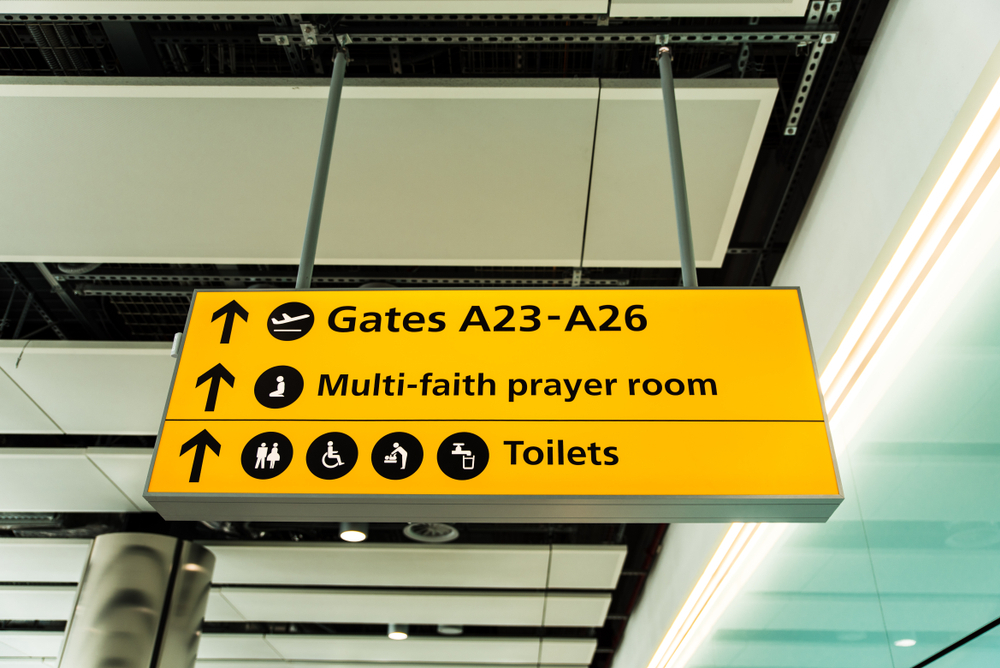
 Tech2 years ago
Tech2 years agoThe Best Way to Never Get Lost: Buy Wayfinding Signs!

 Business2 years ago
Business2 years agoTop Reasons Why you Need to Consider Outsourcing Real Estate Photo Editing

 Travel1 year ago
Travel1 year agoExploring the Best Places with myfavouriteplaces.org:// blog

 Business2 years ago
Business2 years agoDead And Co Setlist What They Played At The Gorge Amphitheatre



